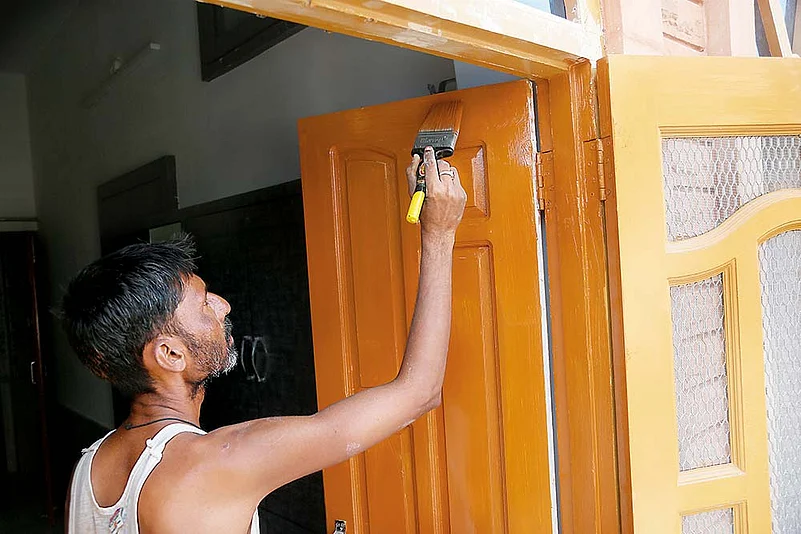When the outdoor air pollution is extremely poor, one may seek refuge in their home assuming that it will provide shelter from the ill effects of the smog outside. But half or more of what one experiences outside is probably penetrating into their home. Although outdoor air quality gets most of the attention, we must remember that we also experience outdoor pollution while we are indoors—where many people spend 90 per cent of their time.
To make matters worse, the source of air pollution is not limited to the outdoors. We must also contend with indoor air pollutants that can make the air inside even worse than outside.
One source of indoor air pollution is cooking, which introduces fine particulate matter known as PM2.5 and many gases. Cooking is more hazardous in a rural setting where the fuel is firewood, coal, or other biomass. Unvented kitchens can fill up with smoke that can cause respiratory and cardiovascular disease. In fact, the World Health Organization estimates that nearly 4 million people die prematurely each year from illnesses stemming from polluting cookstoves. But even clean-burning cooking fuel doesn’t stop the cooking process from creating a spike in particles and chemicals. Fan-powered exhaust hoods are a great solution to get these indoor pollutants out, but they are not common in most kitchens around the world.
Volatile organic compounds are a broad category of indoor air pollutants that include over 10,000 different chemicals. These are emitted from fresh paint, new carpeting, pesticides, new furniture, cleaners, and personal care products. The fragrances associated with these chemicals may be deemed favourable by some, but they introduce more chemicals into the air. So, although you might like the smell of a new car or fresh paint, those are just additional chemicals in the air that you are breathing in. The health concerns of VOCs are dependent on the specific chemical type. Some VOCs are cancer-causing, such as formaldehyde, which is commonly found in less expensive particle board furniture. Other VOCs may be more benign but could still be problematic for individuals with asthma or chemical sensitivities. Fortunately, there are some products that purposefully reduce the amount of VOCs that are used in the formulation. The more consumers demand these products, the more they will become available in the future.

Burning candles, incense, and mosquito coils can also introduce pollutants indoors. Wherever there is combustion, you will find particles and gases. Perhaps the most concerning pollutant is PM2.5, which describes fine particles that are small enough to get into the deepest region of your lungs. The US Environmental Protection Agency states that PM2.5 is associated with heart and lung disease as well as irritation of the airways, coughing and difficulty in breathing. In the case of candles and incense, one can reduce the exposure to PM2.5 by burning them near an open window. Candles contained in a glass jar give off more PM2.5, so it would be advisable to avoid those.
You should also be concerned with ozone, which is a gas found in polluted outdoor air. It forms when there are complex chemical reactions in the atmosphere in the presence of sunlight. According to the USEPA, exposure to ozone can cause chest pain, coughing, throat irritation, and airway inflammation. It also can reduce lung function and harm lung tissue. Ozone can worsen bronchitis, emphysema, and asthma, leading to increased medical care. Ozone can find its way indoors through open windows and any small openings in the structure.
In areas where outdoor air quality is acceptable, windows can be opened to introduce fresh air to help reduce sources of indoor air pollution. But when the outdoor air quality is poor, it would be better to not bring in as much outdoor air. In other words, when indoor air quality is worse than outdoor air quality (such as during cooking or burning incense), it is best to have windows open. However, most other times it would be best to keep windows closed.
Even with windows closed, some outdoor air pollution will come in. Is there any way to purify the air? A portable air purifier using a HEPA filter will help. HEPA filters remove all particle sizes, including PM2.5 and the even smaller “ultrafine” particles. HEPA stands for high efficiency particulate air and is the gold standard for particle removal. Although there are other air cleaning technologies available, I like the reliability of HEPA filtration. One limitation is that HEPA filters, although excellent with particles, are unable to remove gases and VOCs. For that you should consider activated carbon filters.
What about houseplants? Are they a key strategy for providing good indoor air quality? Although there are some studies that document a benefit, the most scientifically rigorous research considers the benefit to be negligible. I think plants create a pleasant indoor environment to look at, but they should not be relied upon for improved air quality.
The next time you enter your home, remember that you are not leaving all the air pollution behind outdoors. Focus your efforts on what you can change—indoor air pollution sources, not on what you can’t easily change—outdoor pollution sources. Think of ways you can better ventilate your kitchen and reduce the amount of chemicals you use indoors. Your target is to have indoor air that looks and smells like…nothing!
(Views are personal)
Ian Cull is an author, speaker and consultant on topics related to indoor air quality. He is President of Indoor Science, an air quality consulting firm based in Chicago.





















